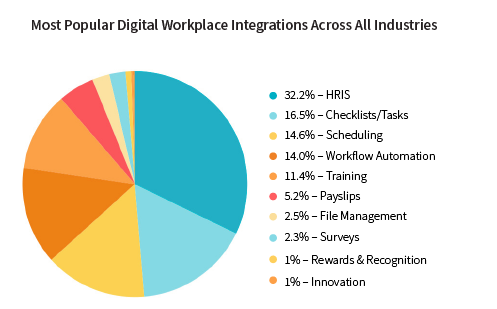What Are Hospital Communication Systems? Patient Care In the Digital Age

Remember when pagers were a thing? Every medical professional had one. Today, hospital communication systems are more robust, immediate, and are ultimately much better at helping healthcare workers deliver the highest quality care to their patients.
The medical field relies on fast responses and comprehensive information. But hospital communication systems have been fragmented. That’s all changing as providers shift to secure mobile-first digital platforms, giving everyone on a medical team access to information they need to care for people.
What Are Hospital Communication Systems?
Hospital communication systems are platforms that facilitate the ability for healthcare providers and supporting staff to connect, collaborate, and exchange information in order to treat patients. They support the collaboration of the many departments and roles within a single hospital or a group of affiliated medical facilities.
Medical workers have a lot of information coming at them as they handle patients, manage equipment, administer medicine, and keep the facility operating. At the nurses’ station alone they are monitoring patients on screens around the clock. From phones to computers to mobile devices to digital signage, hospital communication systems deliver information in various ways.
What Are Common Communication Systems in Healthcare?
If you could visualize the journey of communication within a medical network it would look like the map of a complex transit system. There are messages moving in every different direction, crossing paths between providers, patients, and everyone in between.

Healthcare communication generally falls under a few categories:
- Provider to patient: From telemedicine to automated appointment reminders to secure website portals that provide access to medical records, patients can connect with their providers through several different channels.
- Provider to provider: In today’s world, medical providers digitally exchange patient information. Providers within the same network use portals to directly access information allowing them to exchange information for better continuity of care.
- Provider to machine: Hospitals are filled with machines that help manage patient care, store patient documents, and support staff in various ways.
- Emergency communication: Most hospitals need to have the ability for real-time, emergency communication in place. Beginning in 2016, the Centers for Medicare & Medicaid Services required that any healthcare facility that accepted Medicare and/or Medicaid was required to implement a four-part emergency protocol that includes:
- An emergency plan
- A dedicated set of procedures and policies regarding crisis situations
- A communication plan
- A system to train staff on these protocols and to test the emergency plan
Why Good Communication Is Essential in Healthcare
Bad communication has repercussions for organizations, like poor customer experience, low productivity, and an undesirable bottom line. In the healthcare world, bad communication has more severe consequences—medical errors, malpractice suits, disengaged medical providers, and, in the worst-case scenarios, fatalities. In fact, one Harvard study showed that 30% of malpractice cases were due to communication issues. Those cases resulted in a $1.7 billion price tag and over 1,700 patient deaths.
New Trends Emerge In Healthcare Communication Systems
Medical communication was evolving prior to 2020. But COVID-19 has accelerated the adoption of digital technology. Here are the current trends in healthcare communication:
1. Digital Transformation
Healthcare has been slower to adopt digital communication tools than other industries. Finally, it’s moving further along in its digital transformation journey. Hospitals and medical practices are adopting smart technology, using digital collaboration tools, and automating routine administrative tasks that help them operate more efficiently and support patient-first strategies.
2. Telemedicine
Virtual doctor’s visits over the phone or video were slowly increasing before 2020. But when the pandemic hit, many people avoided routine medical visits. The healthcare industry quickly pivoted and began offering virtual appointments. Of all the healthcare trends, this one’s really gaining steam. Deloitte estimates virtual medical appointments will rise another 5% worldwide in 2021.
3. Mobile-First Communication
Hospital communication devices have come a long way since the once ubiquitous pagers. Healthcare organizations are leveraging the huge increase in smartphone usage (96% of Americans now own one) and switching to secure, cloud-based mobile collaboration tools that allow their entire staff to connect with their colleagues on their personal devices. This real-time capability allows providers to better handle urgent situations. In a hospital setting, every second counts.

Top 5 Benefits of Mobile-First Hospital Communication Systems
Hospitals are constantly in motion. Situations change minute to minute. Patients walk in the door all day and night and hospital workers need to be ready for anything in the blink of an eye. Most of a hospital staff, from custodians to surgeons to technicians, are constantly on the move. As the medical industry makes a greater push toward digital connectivity, they’re seeing the benefits of centering their transformation around a mobile collaboration platform to support the fast-paced, mobile nature of a healthcare environment.
Here are the top five benefits:
1. A Mobile Platform Can Reach and Connect Everyone in an Organization
It’s important that everyone is aligned to the same mission of providing excellent healthcare. A mobile productivity tool connects workers on their devices no matter where they are, giving everyone access to the same information. As healthcare facilities grow their networks and affiliations, this connectivity ensures every provider is connected in one place. Connecting employees can also boost engagement and empower workers which results in better patient care.
2. Real-Time Communication Facilitates Faster Patient Care
A hospital is a time-sensitive environment. A digital communication tool allows staff to send and receive real-time information. The right platform will also ensure messages are successfully delivered, like Beekeeper’s confirmation campaign which ensures critical communication is read.
3. A Centralized Platform Eliminates Silos and Streamlines Communication
With one platform, medical facilities can centralize information. From patient records to safety protocols or shift schedules, employees have access to critical information that allows seamless workflows. A mobile platform like Beekeeper can also integrate with other workplace platforms to give people access to the information they need through a single sign-on system.

4. A Single Mobile Platform Improves the Continuity of Patient Care
Go into any hospital at 7:00am or 7:00pm (give or take an hour) and you’ll see the clockwork changing of shift workers and nursing staff. Hospitals are a 24-7 operation and rely on precise handoffs between staff and an uninterrupted communication stream. One study estimated that 80% of medical errors happen because of poor communication during shift transitions and patient handoffs. With a mobile collaboration platform, workers can start their shift with immediate access to updates they need to care for patients.
5. Two-Way Communication Allows Every Worker to Contribute to Patient Care
Treating patients is a team effort and many different people contribute to their wellbeing. With a hospital communication system centered around a mobile platform, every medical caregiver at any level can communicate information or provide insight into how a patient is doing so the rest of the attending medical staff can stay updated no matter where they are. People can offer solutions, try to find a diagnosis, share lab results, and determine treatment options as a unified team.
Hospital communication systems continue to digitally evolve as the medical industry recognizes the need for greater connectivity. This overhaul of critical communication will lead to faster response times, greater efficiency, a more unified and engaged workforce, and ultimately better patient care.
Most Frequently Asked Questions
What are the 4 types of communication in healthcare?
- Provider to patient
- Provider to provider
- Provider to machine
- Emergency communication
What is communication system in medical?
Hospital communication systems are platforms that facilitate the ability for healthcare providers and supporting staff to connect, collaborate, and exchange information in order to treat patients. They support the collaboration of the many departments and roles within a single hospital or a group of affiliated medical facilities.

About the author
Beekeeper
We make frontline lives easier, work safer, and teams more connected so businesses can reach new heights. At Beekeeper, we’re dedicated to making frontline lives easier by connecting workers with the tools, support, and information they need to feel valued, do their best work, and drive the business forward.







